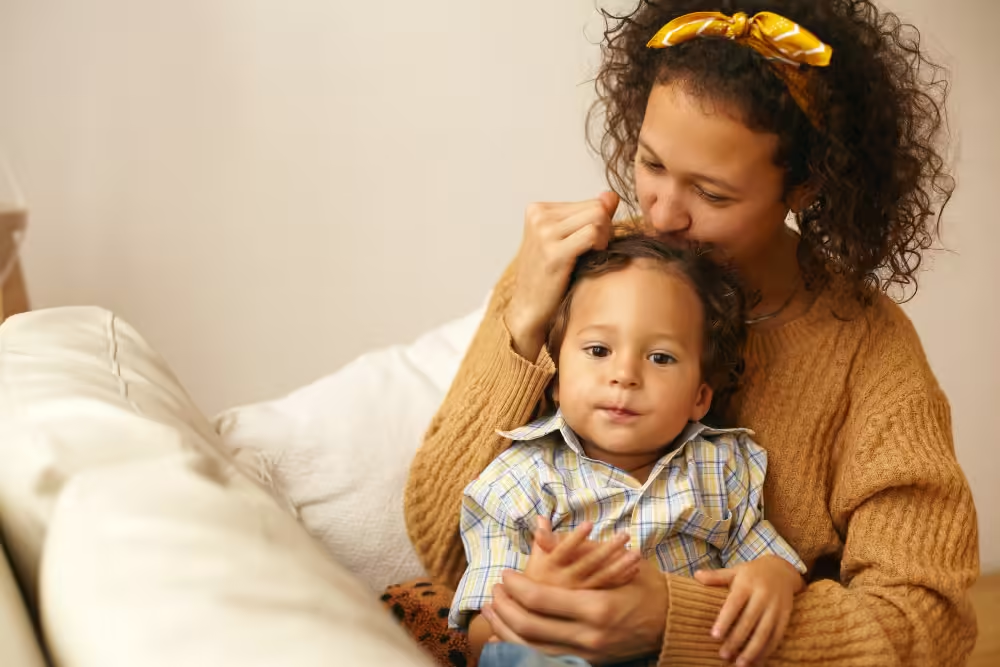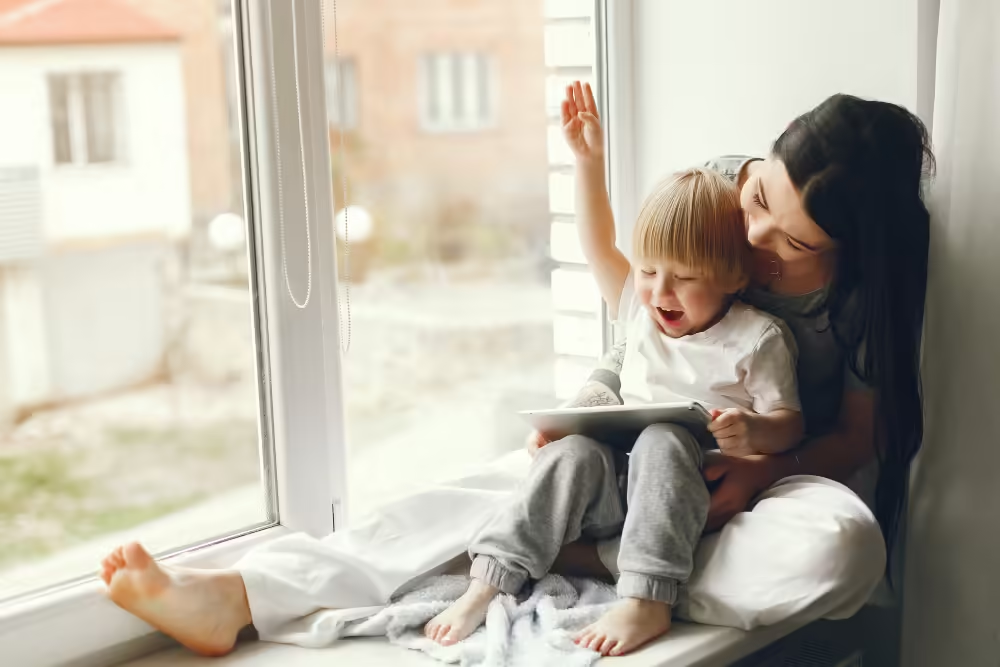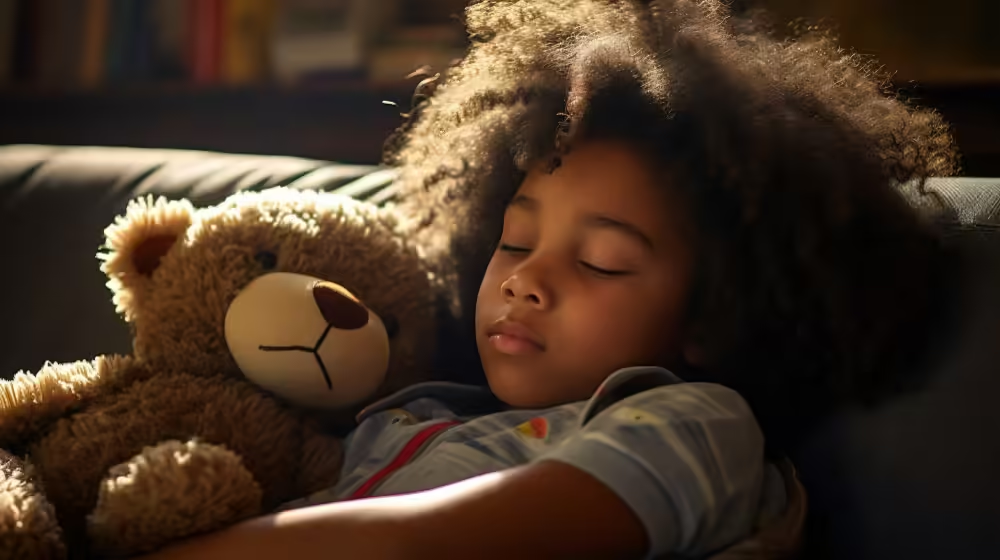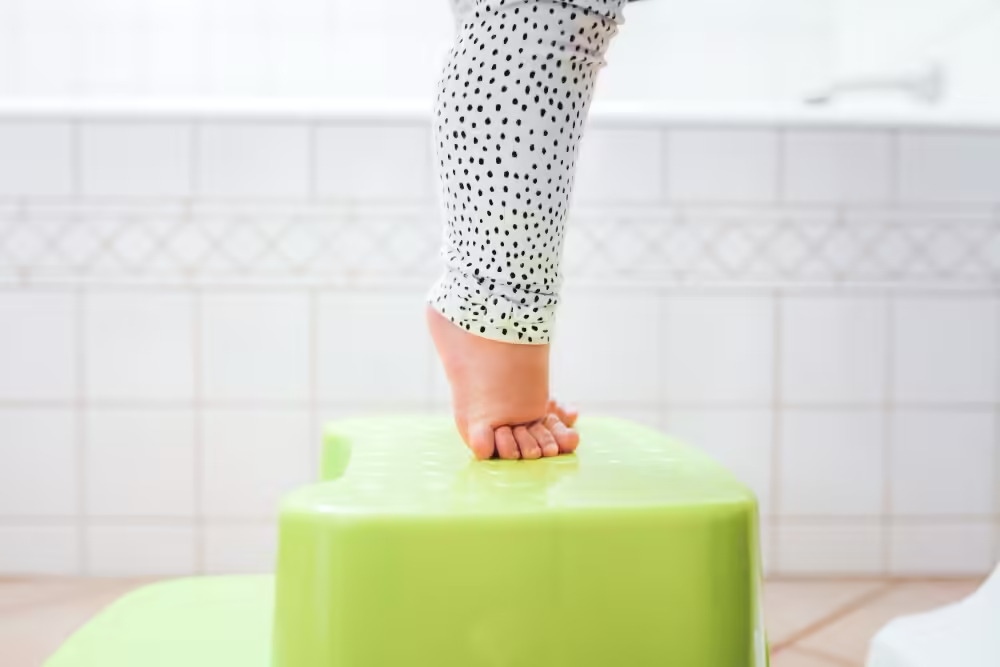We’re ready to start the potty training journey, but where do we even begin?
First, it’s essential to ensure your little one is ready for this big change. The last thing we want is to expend all this energy on training, only to revert back to diapers. We want to do it once and get it right!
Signs Your Toddler is Ready for Potty Training
If your toddler isn’t talking much yet, how can you tell if they’re ready? Consider these questions:
- Can your little one understand you when you talk?
- Can they follow simple instructions?
- Do they point to what they want?
- Are they at least 2 years old?
If you answered “yes” to all of these, then you might be ready to start potty training! However, keep in mind that some children with developmental delays may not be ready even if they meet these criteria. It’s a good idea to consult your pediatrician about the best timing for your child.
How to Start Potty Training

1. Get in the Right Mindset
Your child has been using diapers their whole life, and changing this routine won’t be easy for either of you initially. Expect some frustration and fatigue in the first few days. Remember, both you and your child need to be ready for this transition. It is also important to prepare yourself mentally for the challenges ahead before starting. Preparing mentally can involve reading books about potty training, watching YouTube videos on other people’s experiences, reading blog posts and talking to other moms or dads that have gone through the potty training journey.
2. Choose the Right Time to Start
The best time to begin potty training is on a weekend when you’re home all day. Avoid starting when either of you is sick, tired, or has other commitments. Choose a weekend with minimal distractions so you can fully focus on potty training your little one.
3. Select the Best Potty training Seat
I recommend getting a Baby Bjorn potty chair that you can place in an area where you and your toddler spend most of your time. This allows easy access. When I potty trained my child, I placed the potty near the living room so he could get to it quickly.
Only bring out the potty when you’re ready to start training; otherwise, your child might think it’s just a toy.
4. Start Diaperless Potty Training
For the first few days, go diaper less. Prepare yourself for potential messes as your little one learns. I was surprised by how often my child needed to go in just an hour! If the area is carpeted, place towels or pads underneath the potty chair to catch any spills and have plenty of napkins and towels ready for clean-up.
There are some parents that potty train using potty training pants, but I personally do not recommend it as it makes it harder to notice when your child starts to go.
Forming the Habit

To help your child develop the habit of using the potty, give them water to sip throughout the day. Engage in your usual activities while keeping a close eye on them. When you notice signs that they’re about to go, calmly take them to the potty.
Day 1: Getting Started
On the first day, you are spending majority of your time playing and doing activities with your little one at home while keeping a close eye on them. They can have a shirt on but no diapers or pants. The moment you notice them start peeing or pooping, calmly take them to the potty that you have placed near you. For poops, your child might want to get up, so try distractions like reading a book or watching a favorite show on an iPad while they are sitting on potty.
Day 2: Recognizing cues
On the second day, you might start noticing cues that your little one gives off when they are about to pee or poop. Pay attention to them so you can start taking them to the potty before they even start. The key is to be consistent so don’t catch them in the middle of a pee stream and not take them to the potty because you think it’s too late. They are learning a new habit, so it is important to still take them to the potty and remain consistent in doing that.
Day 3: Developing the habit
Continue to monitor your child closely at home, looking for cues to take them to the potty. This might be the day you find really exhausting and frustrating but remain calm and patient. There is light at the end of the tunnel. If you are needing motivation to continue, just scroll down to my experience below and read it.
Day 4: Short outings
Start venturing out for brief periods, like walks around the neighborhood. Ensure your little one uses the potty before leaving home.
When out, always have the potty available in case they need it.
Day 5 Expanding Time Outside
By days four and five, you can start spending longer periods outside, ensuring there’s always a bathroom nearby.
It is also very important to always be ready to have somewhere they can go potty when they ask to go. If you go places, always make sure you give them the opportunity to pee before leaving home and before leaving place of visit.
Days 6 and 7: Building Independence
By day six or seven, your child should begin going to the potty on their own. If not, consider going back to Days 1-3 routines to reinforce the training.
My Potty Training Experience

My potty training took seven days, and it was the most stressful for me for the first three days. I almost gave up on day three because I felt like all my efforts were for nothing. This kid was constantly peeing on floor no matter how many times I had shown him where the pee goes, I was done y’all! I had gotten to a point where I remember telling myself ‘Okay that’s it, we are going to try again next month’. I was about to go get a diaper to put on him on day 4 because I was just over it when he suddenly got up from playing with his toys on the carpet floor and ran to his potty and sat down. Y’all, I can’t even explain that feeling I had when I saw my little one do that all by himself.
I just remembered thinking that I was just about to give up after all that hard work. So please be patient with your little one and be consistent with taking him/her to the potty. It’s a lot of work to be constantly watching them to know if they are about to pee or poop but it will all be worth it.
Nighttime Potty Training
I waited until my child turned three before tackling nighttime potty training, because I knew it would be too much work to do both at once. He wore diapers to bed, but I explained to him every night that they were only for sleeping. I recommend tackling daytime potty training first before moving onto nighttime potty training. If you however are feeling up to it and think you can do both daytime and night time potty training at the same time, don’t let me stop you.

Potty training and daycare
When I potty trained my son, he was not in daycare yet so we potty trained fully at home. Now, if your toddler goes to daycare you will have to discuss your potty training plan with the teacher before starting.
Recap
Potty training is a big step for both you and your child, requiring patience, consistency, and a supportive mindset. Celebrate small victories and remember that this journey will ultimately be so worth it. Your little one is a big boy or girl and on the plus side you get to save money on diapers!
You got this! just go in with that mindset and prepare your head space for a challenging week and be patient with the process. I leave you with this quote; ‘The only way you will see results is if you stay consistent no matter how hard it gets’.
Share this post with someone you know that, is thinking of potty training a toddler soon and is looking for potty training tips.
Check out this post on finding the right daycare for your family before you go.

